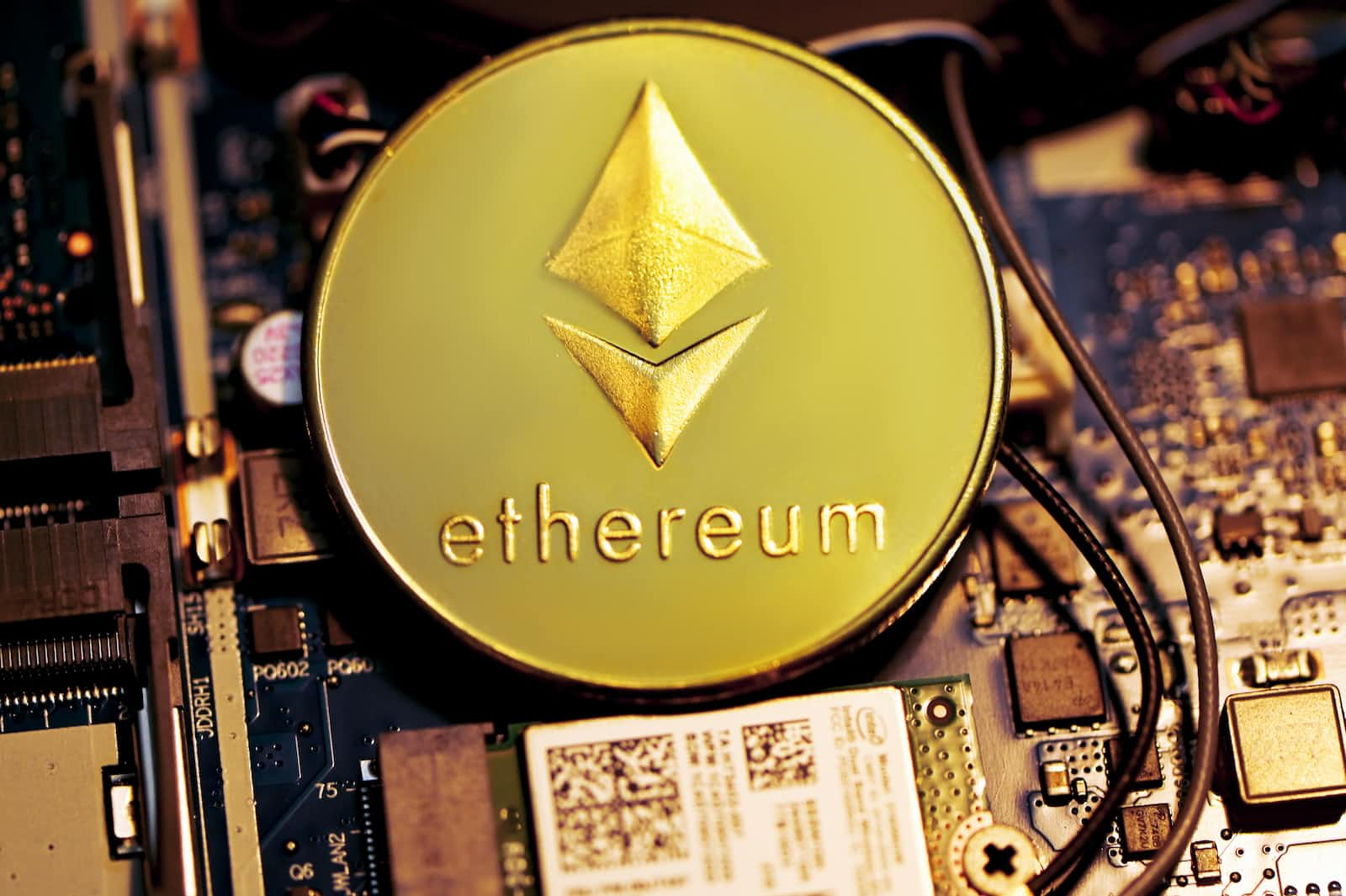What is Ethereum and how does it work?
 Ayodeji Akomolafe
Ayodeji Akomolafe
Ethereum is the second largest cryptocurrency just after Bitcoin, it was launched in 2015 by Buterin and Joe Lubin, the founders of a blockchain software company, ConsenSys. It is commonly known for its native coin, ether, or ETH. Unlike Bitcoin and other cryptocurrencies, Ethereum acts more than just serving as a means of crypto exchange, it is also a decentralized network built on blockchain technology.
Ethereum allows users to build a secured app and games on its platform. It has its token so designed to serve as a method of payment for works done on the network.
What is Ethereum?
Ethereum is the technology built with the blockchain principle which helps in the building of apps and organizations, transacting and assets holding without a central control system. Ethereum is beneficial for industries that are willing to bring changes to their normal ways of operations, especially in the view of security and decentralization. Ethereum supports smart contracts, an important tool used alongside blockchain technology in building decentralized applications.
Ether and Ethereum
Ether (ETH) is the native cryptocurrency of Ethereum and it is used for investment, transactions, and stores of value. Actions carried out on Ethereum require some computational power, the fees for these actions are paid in form of ether. This implies that you need at least a small amount of ether to use the Ethereum network. Ether functions with peer-to-peer payments which means you can send or receive ETH without any intermediary and it is secured with cryptography.
Ethereum vs Bitcoin
Bitcoin is primarily being used as a medium of exchange and to store value. Ethereum's cryptocurrency, Ether, is also used for the same purpose. But beyond that, the Ethereum network serves as a platform for building and running decentralized apps, smart contracts, and other transactions. All these features are absent on the Bitcoin network. In terms of speed, transaction processes are faster on the Ethereum network. In addition, the number of possible Ether tokens that will be released has no limit whereas Bitcoin can only have 21 million coins in circulation.
What is Ethereum Gas?
The cryptocurrency that powers the Ethereum network is Ether, also known as ETH. ETH is the lifeblood of Ethereum. To use the Ethereum network, you have to pay a fee in ETH which serves as an incentive for a block producer or miner whose job is to authenticate and verify your action on the network.
Ethereum use cases
Bitcoin came before Ethereum but it has some inadequacies and this was why Ethereum was created. Bitcoin, being the most secure cryptocurrency in the world, makes it great for storing wealth but yet, but it lacks some complex functionalities. However, Bitcoin lets you carry out transactions and perform some other functions but does not support smart contracts. That is where Ethereum comes to play. Ethereum is decentralized and offers developers a high level of customization. Developers can build anything they want on Ethereum, from decentralized applications to smart contracts, tokens, and so on. This is part of what has made it widely acceptable. One of the most prominent use cases of Ethereum is decentralized finance (DeFi). DeFi is changing the traditional banking system by making financial services like loans, investments, etc., available to anybody.
Advantages of Ethereum
Wide applications
Ethereum is being used as a virtual currency, for self-executing contracts, that is, smart contracts, and for storing data for third-party applications.
A peer-to-peer network
The decentralized Ethereum network allows users to transact and perform other functions without the need for an intermediary. This means that anyone with an internet connection can join and use the network from anywhere and anytime without restriction.
Censorship-resistant
There is no centralized authority that is controlling the Ethereum network. This decentralized function makes it easy for you to send payments, receive payments use other services without the government or company raising questions.
Privacy
To use any app built on the Ethereum blockchain, you don't need to give out your personal details. The focus of Ethereum is not to monitor your online activity but rather, to provide you value large developer community. Ethereum boasts of the world's largest community of developers thereby giving it an advantage over all other networks. Blockchain technology still has a lot of untapped mines and having a larger number of developers will help in reaching its potential through the Ethereum network making the blockchain market-fit and available and useful for an average person.
How to buy ETH
There are two primary ways for you to buy ether (ETH). The first option will be to buy through a crypto exchange platform and the other option is to buy from individuals who are willing to sell their ether, what is commonly known as peer-to-peer trading. Whichever way you decide to go, you need to have a crypto wallet with which you will store your ether.
What is Ethereum 2.0
Ethereum 2.0 also known as Eth2 is an upgrade to the Ethereum network which is aimed at solving some scaling challenges that Ethereum is currently facing. Due to the increase in Ethereum's popularity and consequently its demand, there is high congestion on the network which has affected the transaction processing rate and also makes it more expensive. The upgrade to Ethererum 2.0 will reduce transaction charges, process more transactions simultaneously and make Ethereum more environmentally friendly.
What makes Ethereum 2.0 different from Ethereum 1.0?
The major difference between the two is that Ethereum 1.0 uses the consensus mechanism called proof-of-work while Ethereum 2.0 will function using the proof-of-stake mechanism.
What will be the new Ethereum Infrastructure?
Proof-of-Stake (PoS) is an alternative consensus mechanism that consumes less energy. In PoS, crypto owners can stake coins and create their own validator without depending on miners as in the PoW consensus method. PoS reduces the energy required to power computers in PoW to solve algorithms.
Proof of work vs. proof of stake: What is the difference?
Proof-of-work (PoW)
Proof of work is a form of cryptographic proof which was first used by Bitcoin. Ethereum also uses proof-of-work as a consensus mechanism to validate transactions. In proof of work, miners use the computer processing power to solve cryptographic algorithms or equations that are embedded in the blockchain’s block. The first miner to solve the problem adds the new transaction to the record of the transactions on the block. These miners receive a price for their work using the cryptocurrency native to the network they worked on. Validating using this method is energy-consuming because the power used by other miners who participated in the competition will be wasted.
Proof-of-stake (PoS)
The proof of stake model allows crypto owners to stake coins and create their own validator instead of relying on miners. Validators function similarly to miners in that they verify transactions on the network. The main advantage of PoS over PoW is that it is more energy-efficient because you don't need a lot of computing power to secure the blockchain.
When is The Merge Happening?
After many delays, the Merge is expected to happen around September 15. The date was made known by the Ethereum Foundation on August 11.
How will the Merge affect Ethereum?
The Merge of Ethereum from PoW to PoS will improve the efficiency of the Ethereum network. The upgrade to Ethereum 2.0 will massively cut down the energy used by the Ethereum blockchain. According to the source from the Ethereum Foundation, the amount of Ethereum's energy consumption will be cut down by 99.95% due to The Merge.
Subscribe to my newsletter
Read articles from Ayodeji Akomolafe directly inside your inbox. Subscribe to the newsletter, and don't miss out.
Written by

Ayodeji Akomolafe
Ayodeji Akomolafe
I have over 3 years writing experience I am also passionate about blockchain technology. I can write effortless on topics such as DeFi, DApp, NFTs, Crypto and Metaverse.